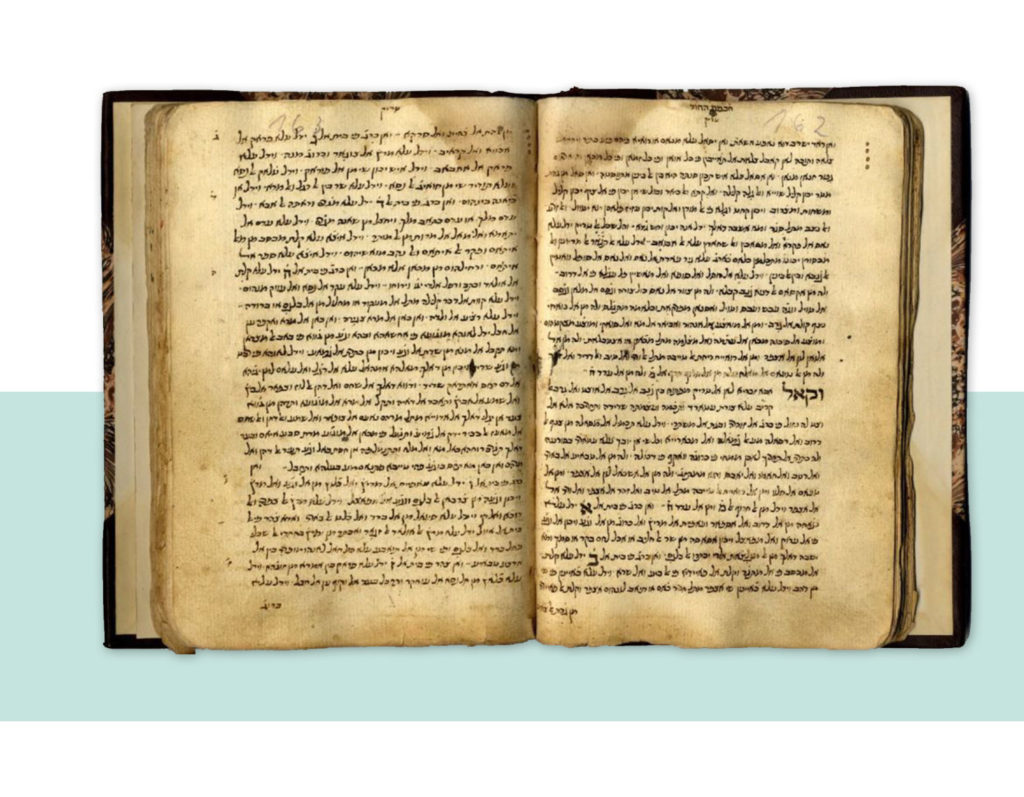
Bundle of works on practical Kabbalah: Remedies, lots and divinations, in Hebrew and in Judeo-Arabic, and written by Rabbi Moshe Mizrachi, a contemporary of Rabbi Chaim Vital’s, who mentions him in his writings as “HaSofer.” In most of Rabbi Moshe Mizrachi’s transcriptions, his name does not appear. They are usually identified by comparison with two manuscripts in which he signed his name in the colophon. In this manuscript, his full name appears twice(!) in his hand – at the beginning and the end of the preface to the manuscript.
The manuscript is comprised of several parts:
1) Book of lots for divination “by the anthologist Moshe Mizrachi … Damascus … 1628”
2) Another book of lots. Incomplete.
3) Book on sand lots (גורל החול)
4) Group of books on remedies and the nature of drugs in Judeo-Arabic.
Books of lots have always constituted an important aspect of practical Kabbalah, for the purpose of revealing the hidden and predicting the future. “And it is tried-and-true secret of Jewish sages and will tell all that is asked by the petitioner.” There are those who say that this goral was used by the men of the Great Assembly [אנשי הכנסת הגדולה], who hid them from future generations, and only after the cancellation of the Greek decrees on the Jewish people was it revealed to select individuals. Over the years, many handwritten and printed copies were made of books of various types of lots. But given that precise incantations are necessary, and that they must be conducted at specific times according to detailed instructions, and that the books’ copyists were not sufficiently expert, the lots often did not work to produce precise results, and as a result, usage of this subject in practical kabbalah has waned.
Before us is a collection of books of lots including precise instructions, written in the hand of Rabbi Moshe Mizrachi, one of Damascus’ sages and Kabbalists, and one of the leading copyists of the oral tradition from the generation of the Ar”i HaKadosh and Rabbi Chaim Vital. Rabbi Chaim Vital himself authorizes him and refers to him as “HaSofer” [“The Scribe”] because of the huge amount of material he left behind. Kabbalah scholar Yosef Avivi, in his book Kabbalat HaAr”i (Chapter 17), in a lengthy essay on Rabbi Moshe Mizrachi, writes that sixteen manuscripts of the Ar”i’s kabbalah written by Rabbi Moshe Mizrachi have been found, as well as his glosses on the Zohar and Tikkunim .
Approximately [160] pp. 13×19 cm. Oriental script. Tables and Kabbalistic symbols. It may be that one or more leaves are lacking. This material has not been adequately examined as befits its importance.
Fine condition. Aging and usage stains. Reinforcements. Minimal tears in some leaves with very slight damage to text. Some leaves may be lacking. Semi-leather binding and new marbleized paper.
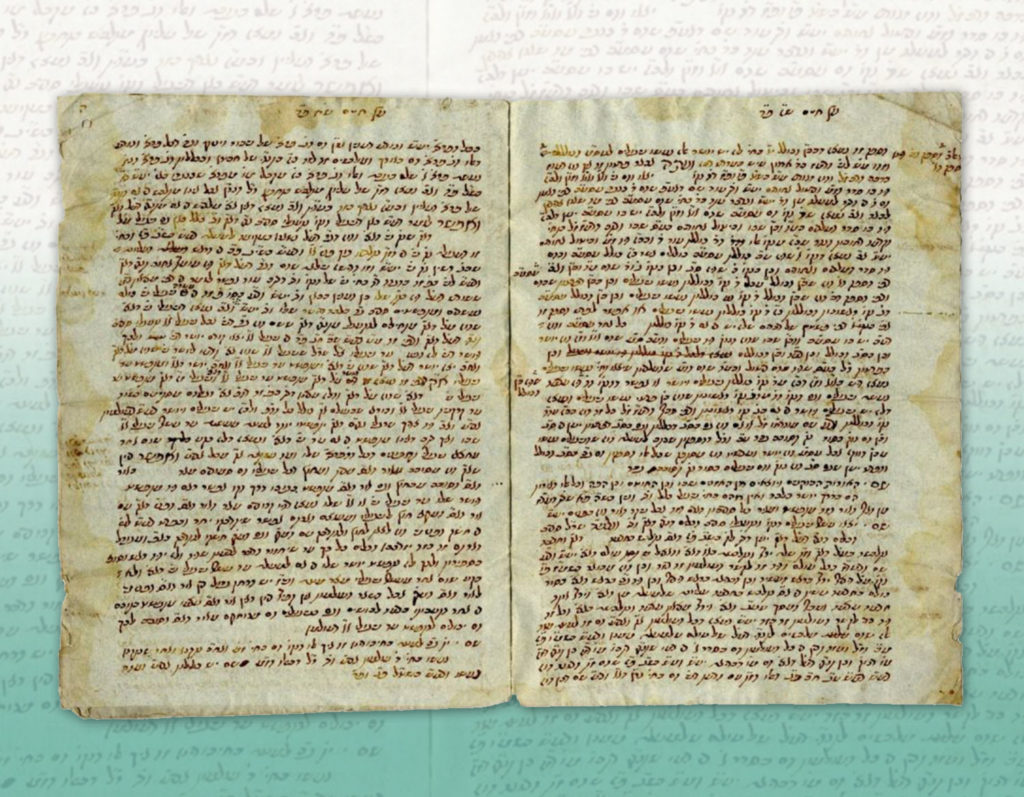
Glosses and elucidations on Etz Chaim by Rabbi Chaim Vital – the foundational book of Rabbi Chaim Vital’s Kabbalah per that which he received from his teacher, the Ar”i z”l.
Manuscript from a Sephardic Kabbalistic sage from c. the beginning of the 19th century. We do not know the identity of the writer nor whether these matters were printed.
[15] pages of numbered leaves.
24×18 cm. Greenish paper. Oriental script, with marginal notes.
Fine condition. Water stains. Light tears in the margins without damage to text; the last leaf has a tear with damage to individual words.
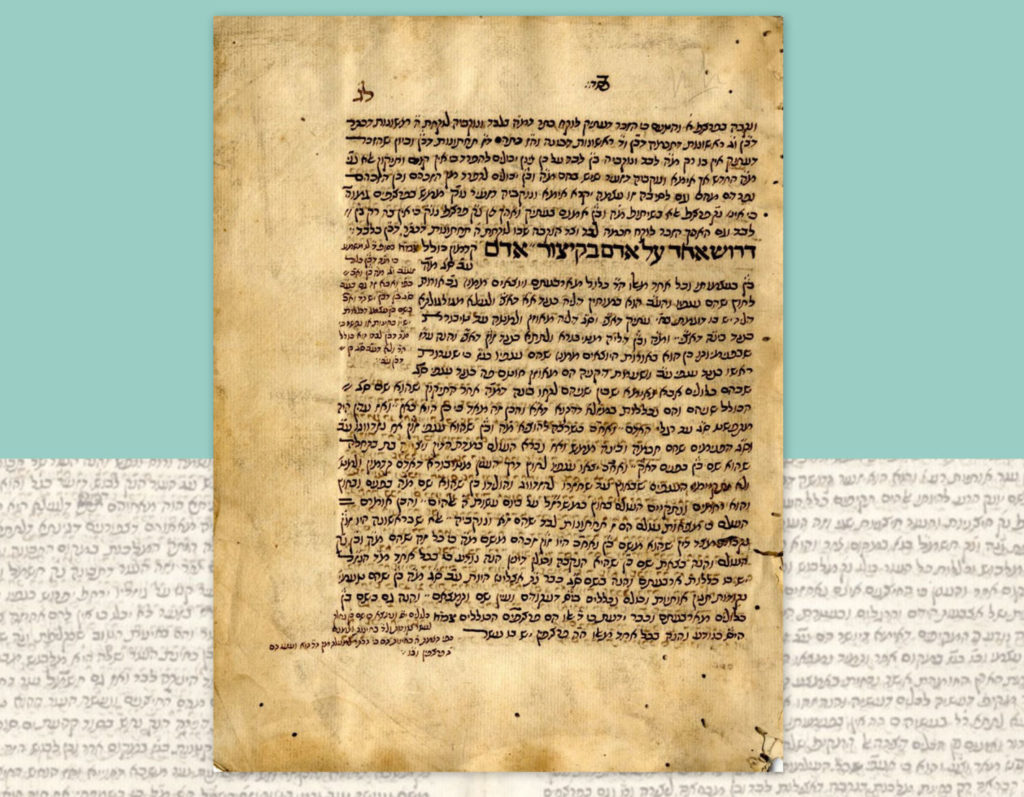
“And it is the root and principle of all drushim … more important to me than all other books …” (Mahar”i Tzemach)
Comprised of sermons, elucidations and deep articles about the circles and the lines, the points and rectifications in general and in particular by the G-dly Kabbalist Rabbi Chaim Vital arranged and with glosses by Rabbi Ya’akov Tzemach.
Colophon at the end: Blessed be Hash-m who has granted me the privilege of completing this honorable book named Adam Yashar , may he grant me likewise to endlessly write many books. Finished on the fifth day of Shevat, 1719.
The manuscript before us is one of the last of the hidden writings found by Rabbi Avraham Azoulay in the Safed genizah. It is known that Rabbi Chaim Vital wrote a later edition of his writings in which he expanded upon his teacher the Ar”i’s doctrine, including matters he conceived with his great spirit and Kabbalistic wisdom, yet he decided to bury them in the cemetery in Safed. Rabbi A. Azoulay later published them according to intentions and unifications. One of the writings taken from the genizah is the book before us, Adam Yashar . Mahar”i Tzemach writes in his preface to Kol BeRamah about this book “It is the root and principle of all drushim … more important to me than all other books; it is entirely innovation and additions.”
Sefer Adam Yashar was printed for the first time over 150 years after the manuscript before us, in Krakow, 1885. We have not made a comparison between this manuscript and the printed version. The manuscript before us was apparently written in Morocco. It is incomplete, but does contain most of the book.
Approximately [162] written pages. Leaves 33-114. 23×17 cm. High-quality paper. Wide margins. Straight and orderly Oriental script with “windows” [‘חלונות’] for the Mahar”i Tzemach’s glosses. There is a lengthy handwritten scholarly gloss on the sheet of page 49a.
Moderate-fine condition. Aging stains. Minimal worming damage, primarily in the inner margins. Not bound.
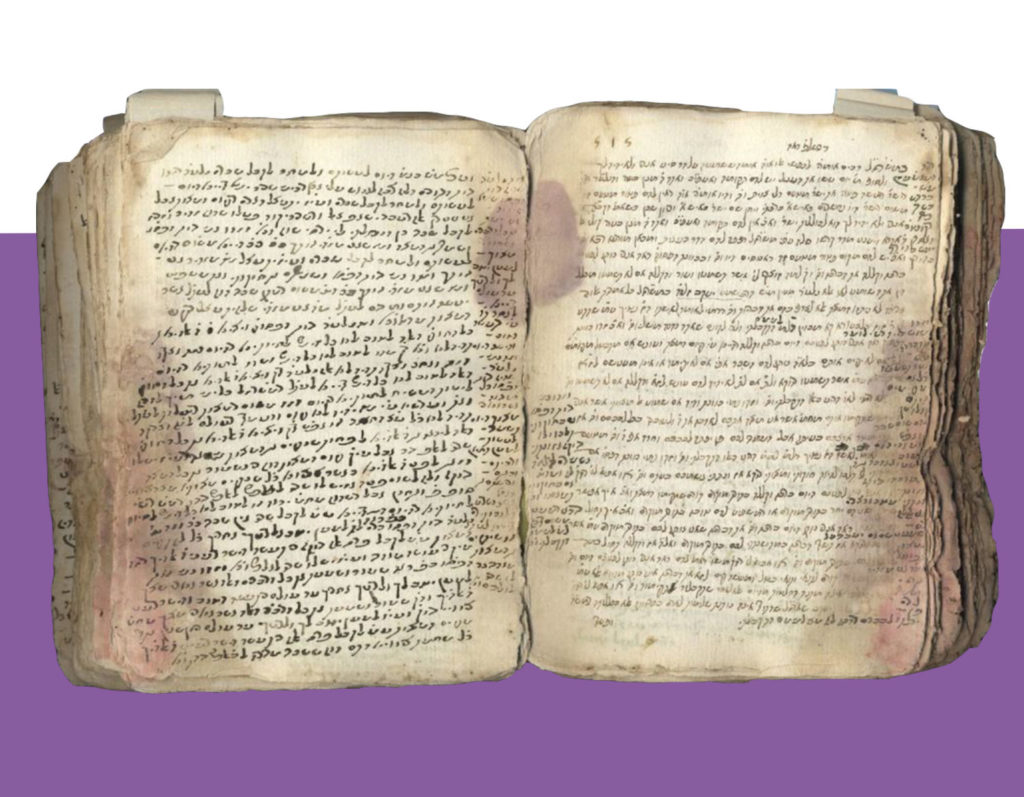
Sermons on the parshahs in chumashim Bamidbar-Devarim and compilations by the gaon the G-dly Kabbalist … Rabbi Avraham Meyuchas, author of Sdeh HaAretz and Degel Ahavah . He was one of the Chid”a’s teachers.
Scribe’s copy, with many supplements on almost every leaf in the author’s hand. The author’s supplements include completions on the sheets and between the lines as well as corrections. Some of the author’s supplements are in his hand.
The sermons before us include sermons for the parshah in Bamidbar and Devarim, for Shabbat Teshuvah, eulogies and more. Sermons, that as stated, have never been printed. Each sermon opens with a beautiful literary introduction as is his way in his printed sermons. The manuscript before us is identical to his Sdeh HaAretz manuscript without any doubt (it has been compared to photocopies at the beginning of the aforementioned Diglei Ahavah ).
The gaon Rabbi Avraham Meyuchas [c.1700-1768], author of the renowned book Sdeh HaAretz was one of the leading sages and Kabbalists of Jerusalem and a contemporary of lofty geonim and Kabbalists. Already in his childhood he entered the renowned Beit Ya’akov yeshivah and became the primary disciple of the author of Pri HaAretz .
So attests his brother, the Rishon LeTziyon Rabbi Meyuchas son of Rabbi Shmuel, author of Pri HaAdamah in his approbation to Sdeh HaAretz , about him: “A person who has everything, expert in revealed and hidden aspects of Torah … the G-dly Kabbalist, modest as Hillel, G-dly sanctified from the womb, never leaves the tent of Torah … separate from all worldly matters and suffers greatly, yet despite this has not left the study hall for even an hour.”
The author of Etz HaSadeh would write a lot of Torah novellae, and his nephew, the rabbi, author of Brachot Mayim in his approbation to Sdeh HaAretz Part II writes of him: He held the rod of wisdom and wrote many books …” Books printed until now include Sefer Sdeh HaAretz in three parts – responsa and sermons (Salonika 1784-1798) and Diglei Ahavah on the book Etz Chaim by Rabbi Moshe Chaim Luzzatto in three parts (published by Ahavat Shalom, Jerusalem, 2003).
[316] pp + [26] leaves of indices (The index leaves also contain many supplements in the author’s hand). Dimensions: 23×16 cm.
Moderate condition. Minimal worming perforations. Dampstains with faded writing in the margins. Not bound.
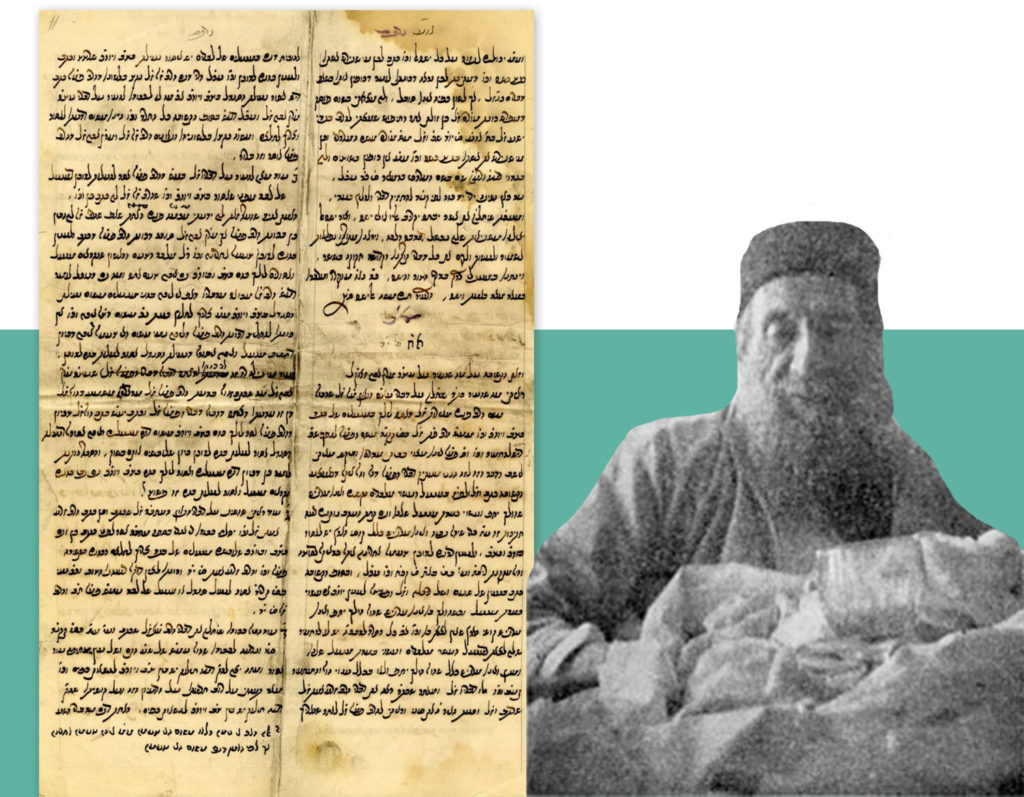
Large manuscript, responsa and halachic correspondence with rabbinic leaders of Jerusalem handwritten by the Rishon LeTziyon, Rabbi Chaim Moshe Elyashar, son of the Yisa”h Berachah. Signed autograph. These responsa were apparently printed in Shu”t Moshe HaI”sh .
The manuscript bears, inter alia, complex halachic queries asked of the Rishon LeTziyon, Rabbi Chaim Moshe Elyashar, by rabbinic leaders of the generation, and Rabbi Elyashar’s responsa.
The Rishon LeTziyon, Rabbi Chaim Moshe Elyashar, known as HaRav Cham”a [1845-1924] was the son and disciple of the Rishon LeTziyon, the gaon Rabbi Ya’akov Shaul Elyashar, author of Yish”a Berachah , and son-in-law of the Rishon LeTziyon, Rabbi Raphael Meir Panigel. His roots are in an ancient rabbinic family based on an Ashkenazic family named “Vilna” that became integrated among the Sephardim in the 18th century. The Cham”a led the Va’ad HaRabbanim BiYerushalayim which united the Sephardic Chachamim and the Ashkenzic rabbis of Jerusalem and became the basis for the chief rabbinate of Israel. The Va’ad was under the directorate of Rabbi Chaim Moshe Elyashar and Rabbi Yitzchak Yerucham Diskin. His published works include: Shu”t Moshe HaIsh (Jerusalem, 1921) and Pnei Cham”a which was published together with his father’s Sha’al HaI”sh (Jerusalem 1901). It is known that Cham”a left behind additional manuscripts, apparently including this one before us.
[46] large pages, 20×33 cm. Moderate-fine condition. Aging stains. Fold marks, tears in the folds with blemishes to isolated words. Not bound.
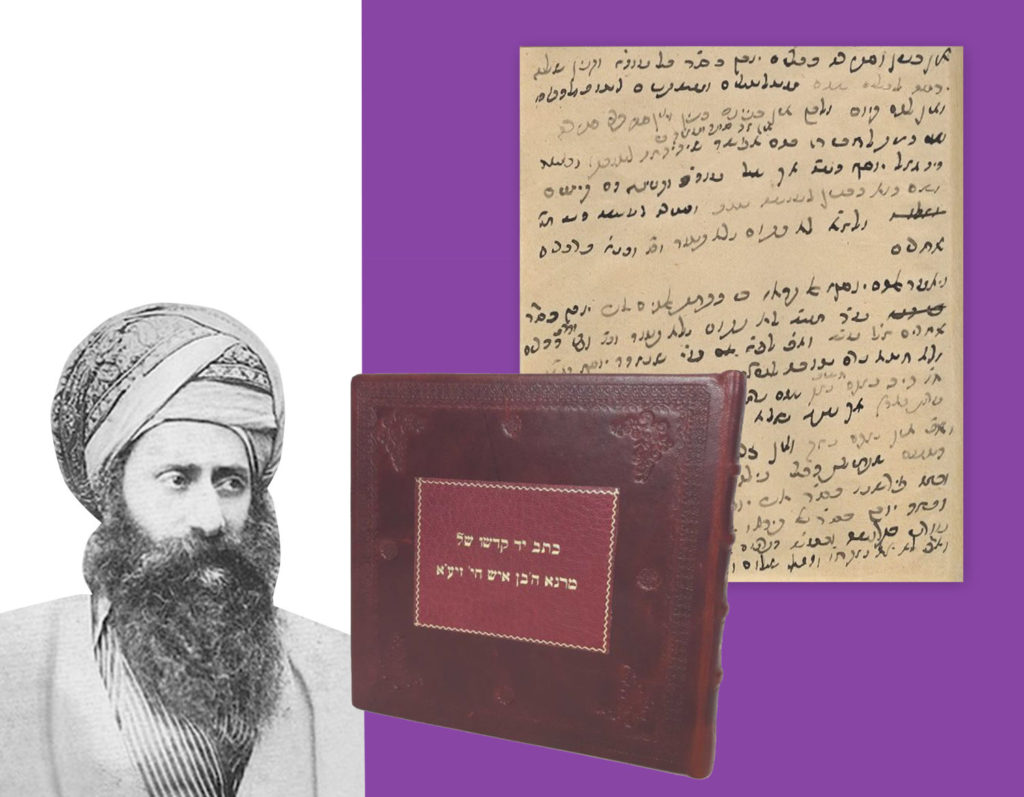
“And if so, no damage has resulted and all is peace and goodness” (Blessing of the Ben Ish Chai) Apparently not printed!
Two pages written in the hand of the leader of Jewish Diaspora in Bavel, the author of Ben Ish Chai .
The manuscript is comprised of two precious sermons. The first is an interesting sermon connecting the laws of Shabbat to this word and the world to come. The second sermon, in a matter related to this time of year, is on the laws of repentance for severe transgressions between man and his fellow. The Ben Ish Chai proves from Yosef HaTzaddik, that due to the fact that he did not sin in Egypt, his brothers were not punished on his account. Yet if, Heaven forbid, he had sinned, the brothers would have been responsible for this. From this, a frightening halachah is learned: If, as a result of a specific act a person commits a sin, that sin is also attributed to the person who caused it. These are frightening words.
The sermons ends with the rare blessing: “And if so, no damage has resulted, Heaven forbid, and all is peace and goodness.”
Refer to the Hebrew catalog text for a brief biography of Rabbi Yosef Chaim, known as the Ben Ish Chai .
The Ben Ish Chai’s manuscripts are known among Jews of Iraqi descent as a segulah for success and protection for he who has them in his possession. All the more so this manuscript before us which contains a rare blessing at its conclusion; it certainly comprises a segulah for protection for who ever has it in his possession.
[1] leaf, 12×11 cm. Approximately 20 lines, characteristic Sephardic script with corrections. All in his hand. Transcription included.
Very fine condition. Magnificent leather binding.
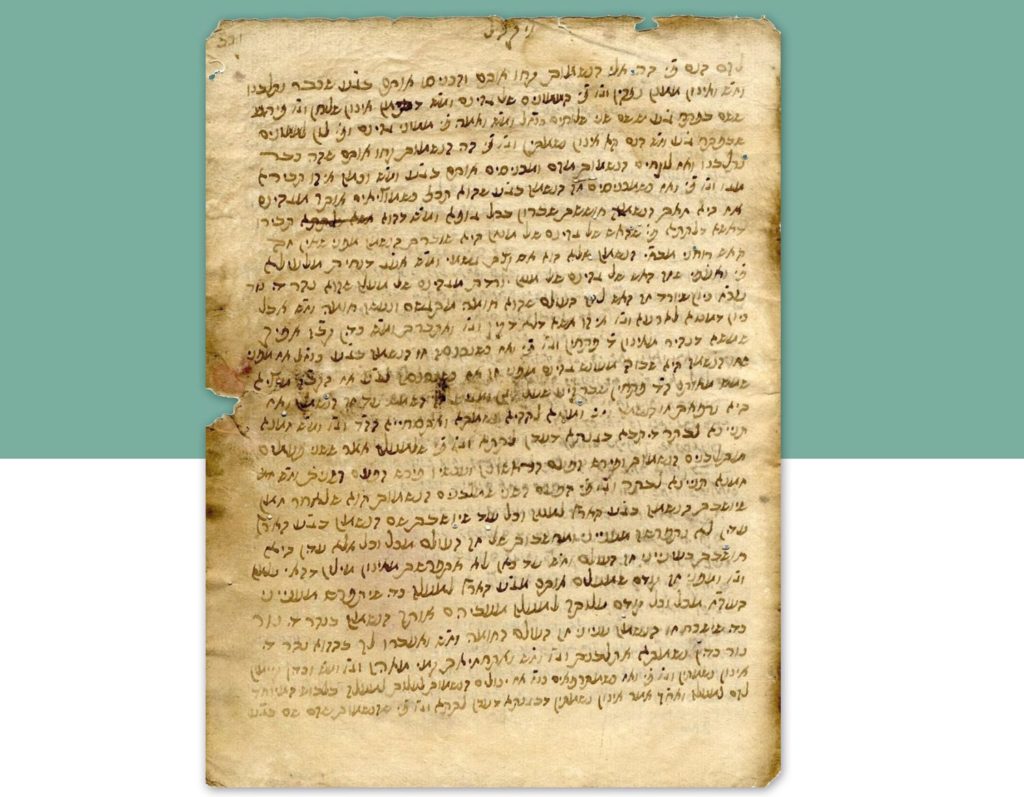
Compilation of elucidations of Kabbalistic doctrine, possibly a commentary on the Zohar , Oriental script.
Titled for the weekly Torah portions Naso/Vayakhel.
It appears that the manuscript is an elucidation on articles from the Zohar , or on the Torah in the Pardes method.
[7] pp. 19×14 cm. Sephardic rabbinic script.
Moderate condition. Minimal tears with lack, stains and wear. Lacking the beginning and the end.
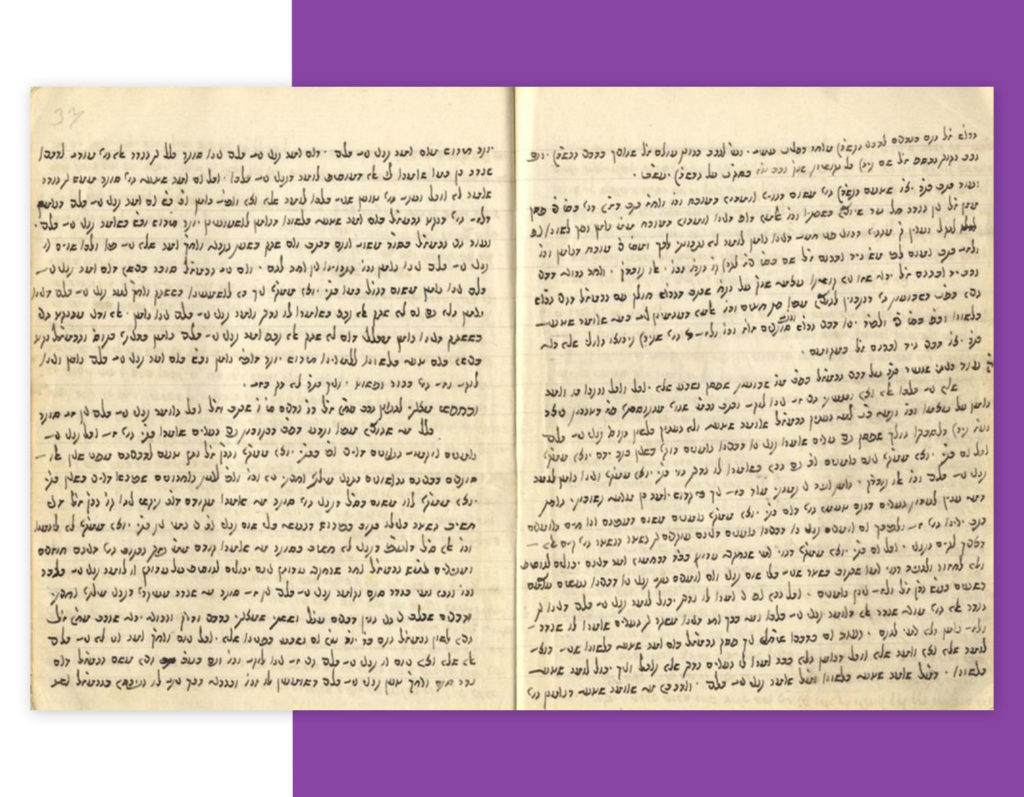
Manuscript – responsa and halachic correspondence with rabbinic leaders of Jerusalem handwritten by the Rishon LeTziyon Rabbi Chaim Moshe Elyashar, son of the Yis”a Berachah. Signed autograph. These responsa were apparently printed in Shu”t Moshe HaI”sh .
This manuscript bears complex halachic questions asked of the Rishon LeTziyon, Rabbi Chaim Moshe Elyashar, by rabbinic leaders of his generation (including the rabbi of the Land of Israel, Rabbi Yosef Chaim Sonnenfeld) and Rabbi Elyashar’s signed responsa.
The Rishon LeTziyon Rabbi Chaim Moshe Elyashar, known as HaRav Cham”a [1845-1924] was a son and disciple of the the Rishon LeTziyon, the gaon Rabbi Ya’akov Shaul Elyashar, author of Yis”a Berachah , and son-in-law of the Rishon LeTziyon Rabbi Raphael Meir Panigel. He descended from an ancient rabbinic family that was originally Ashkenazic, named Vilna, that became integrated with the Sephardim during the 18the century. HaRav Cham”a led the Va’ad HaRabbanim BiYerushalayim that united the Sephardic sages of Jerusalem and its Ashkenazic rabbis, and was the basis for the establishment of the chief rabbinate of Israel. The Va’ad was under the presidency of Rabbi Chaim Moshe Elyashar and Rabbi Yitzchak Yerucham Diskin. His printed works include: Shu”t Moshe HaI”sh (Jerusalem, 1921), and Pnei Cham”a that was printed together with his father’s She’al HaI”sh (Jerusalem, 1901). It is known that HaRav Cham”a left behind other works in manuscript; this is apparently one of them.
[128] pp, 15×20 cm. Fine-very fine condition. Two leaves with wear to the margins. Not bound.
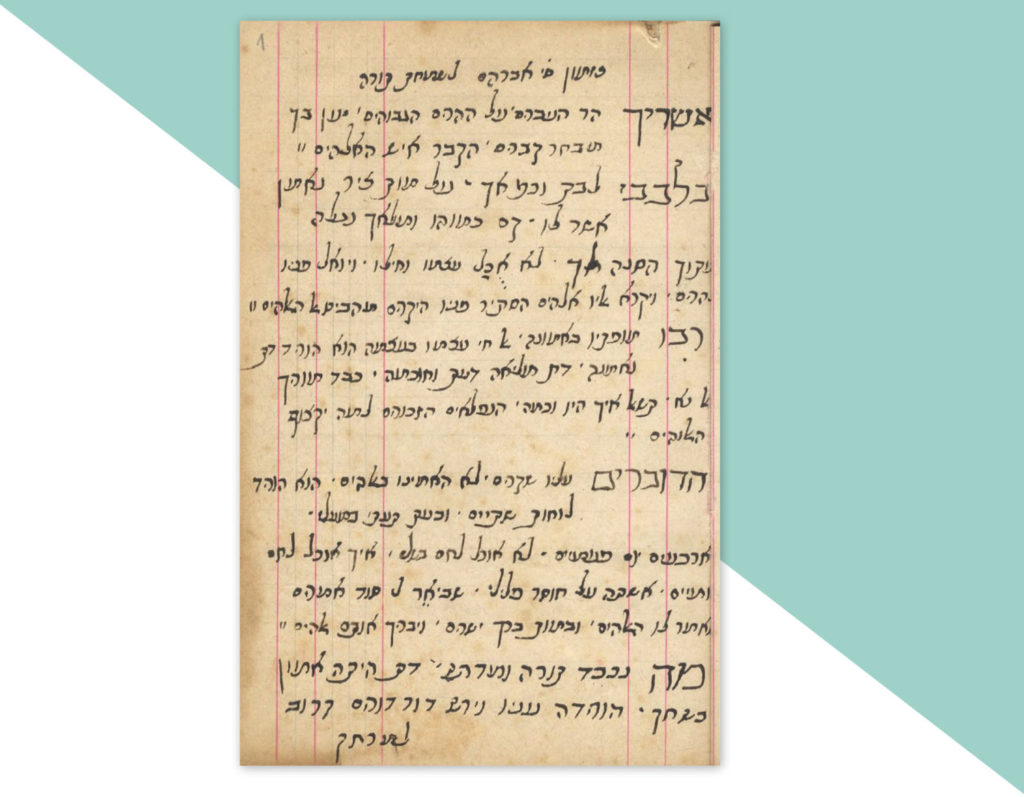
1) Chahir shel Pessach .
Targum Onkelos on the Torah reading for Passover, and an Aramaic translation of the haftarot for Passover. 19th century . Includes the hymn “Yedidim Yotzim MiParech Anemin, ” by Yaakov.
[92] leaves of which [67] are written. 10×16.5 cm. Paper. Oriental script (Moroccan). Jacket cover.
Moderate-fine condition. Legible despite acid damage. Several pages are torn with damage to text. minimal worming perforations.
2) Kinot L’Tisha B’Av .
18th-19th century , Page 16a includes an index to another compilation of lamentations, and page 16b includes an index to the lamentations in this manuscript.
[32] pp. 10×15.5 cm. Oriental script (Moroccan). Jacket cover.
Fine condition. Tiny perforations in the binding. Few worming perforations. Tear in leaf [15]. One leaf may be lacking. New cardboard binding.
3) Compilation of hymns and prayers, mainly for Jewish festivals , 19th century. The end includes the inscription: “I copied them on the twenty sixth of Elul, 1897, signed, Massoud Asbag.”
[38] pp, of which [18] are written. 9X14 cm. Oriental script (Moroccan).
Fine condition. Aging stains. Tiny tears without damage. Simple binding.
4) Anthology of hymns, mainly by poets of North Africa, predominately Morocco. 1937.
“Shir HaPalmach” is featured on leaf 32, and “HaTikvah” is on page 33a, both are written in a later script.
The copyist’s name is found at the beginning of the manuscript, and also appears on page 22a, in addition to the inscription: “This book of hymns belongs to Shimon HaLevi Y”Tz. Yemen, 1937.”
37 leaves written, and many additional blank pages. 10×15 cm. Oriental script (Moroccan). Fine condition.
5) Hymns for Purim with commentary (excerpt from a manuscript). Apparently written in Tunisia. 19th century.
Page 7b bears the owner’s inscription: “זה פיוט של ציון בוכריץ.” The owner’s original name was erased, and the name “Tzion” was written in its place.
[16] pp, 10×16 cm. Oriental Tunisian script, new binding.
Poor-moderate condition. Tears across the leaves and in their margins, wear on the pages’ edges, partial fading of the ink.
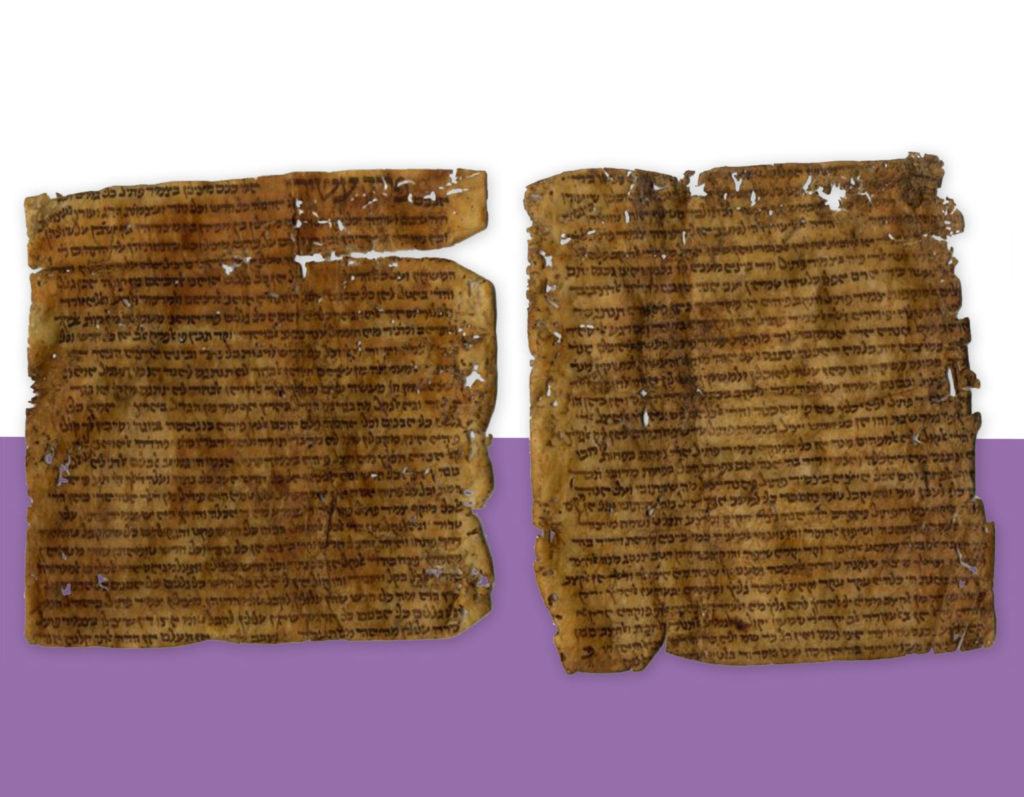
Manuscript on parchment that was removed from its binding, bearing Peirush HaMishnah L’HaRamba”m, Tractate Keilim, 10th chapter. Yemen, 13th-14th centuries.
[2] leaves. Ink on parchment, written on both sides in Yemenite script.
Leaf size: Approximately 18×20 cm.
Moderate-fine condition. Minimal perforations and tears.
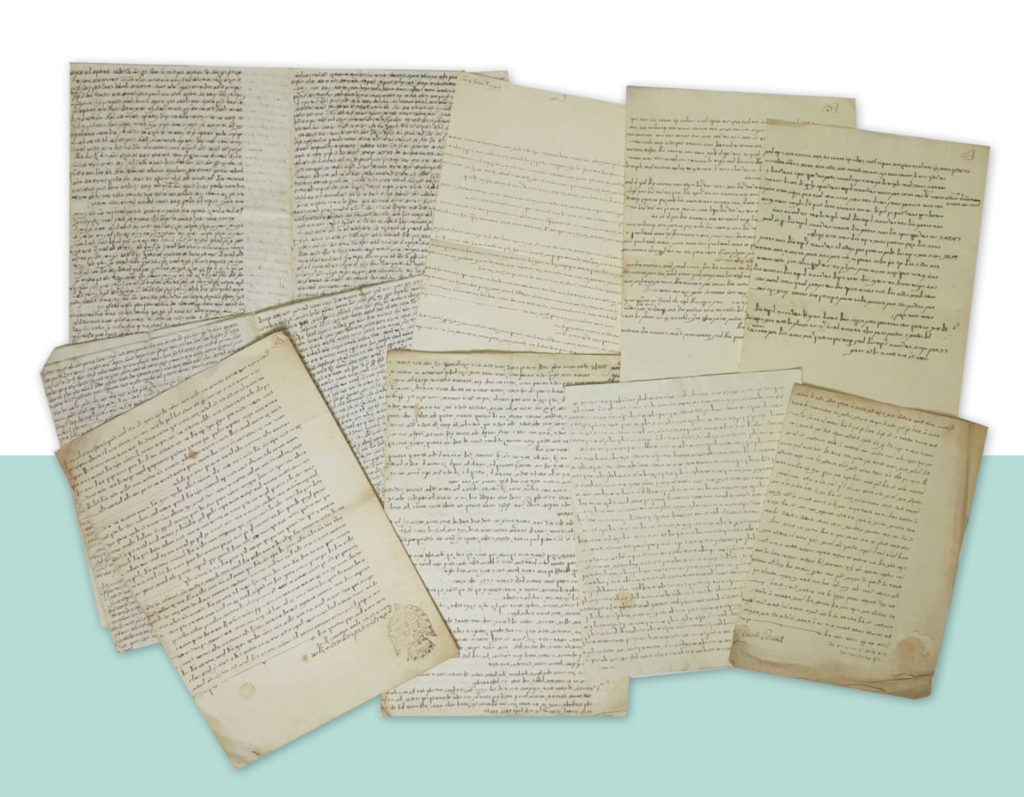
1] Lengthy halachic responsum. The responding rabbi disputes the Meli”tz [apparently he is referring to Rabbi Mordechai HaLevi] according to the conclusion of the responsum: ‘אישי כ”ג ר”מ ור”מ ואב”ד נר”ו’. It appears to have been sent to the gaon Rabbi Yismael HaKohen, Av Beit Din of Modena, author of Zera Emet .
19 pages. Unsigned. Italy, 1795.
2] Lengthy responsum on the laws of interest, apparently sent to the gaon, the author of Zera Emet [see the responsum’s conclusion]. Unsigned. 12 pp, c. 1790s.
3] Lengthy and complex question with respect to partners that split up, and there were many conditions between them. The conditions they made between them in 1777 and 1782 are copied into the body of the question. The question is from 1786. 4 pp, unsigned.
4] Part of a responsum. Among his words, he writes: “And I will copy what I wrote from the words of the rabbi Mishneh L’Melech in my letter to Rabbi Avraham Reggio … of Gorizia … 3 pp.
5] Deed of purchase – Verona, 1787. Signed by the witnesses: Chaim Shlomo Levi Mortira [scribe of the Modina community] and Yosef Basiliah.
6] Deed of purchase. Modena 1783. Signed by the witnesses: Ephraim Padawani/Eliezer b”r Yitzchak Rephael Poleisi.
7] Will by a deathly ill person – Modena 1743. Signed by the witnesses: Halleluy’ah Pormigini / Binyamin b”r Eliezer Ashkenazi. (Appears to be a copy)
8] 2 engagement contracts [שטרי תנאים בעניני שידוכים] apparently from Modena from 1752/1755. Unsigned.
All are in very fine condition.
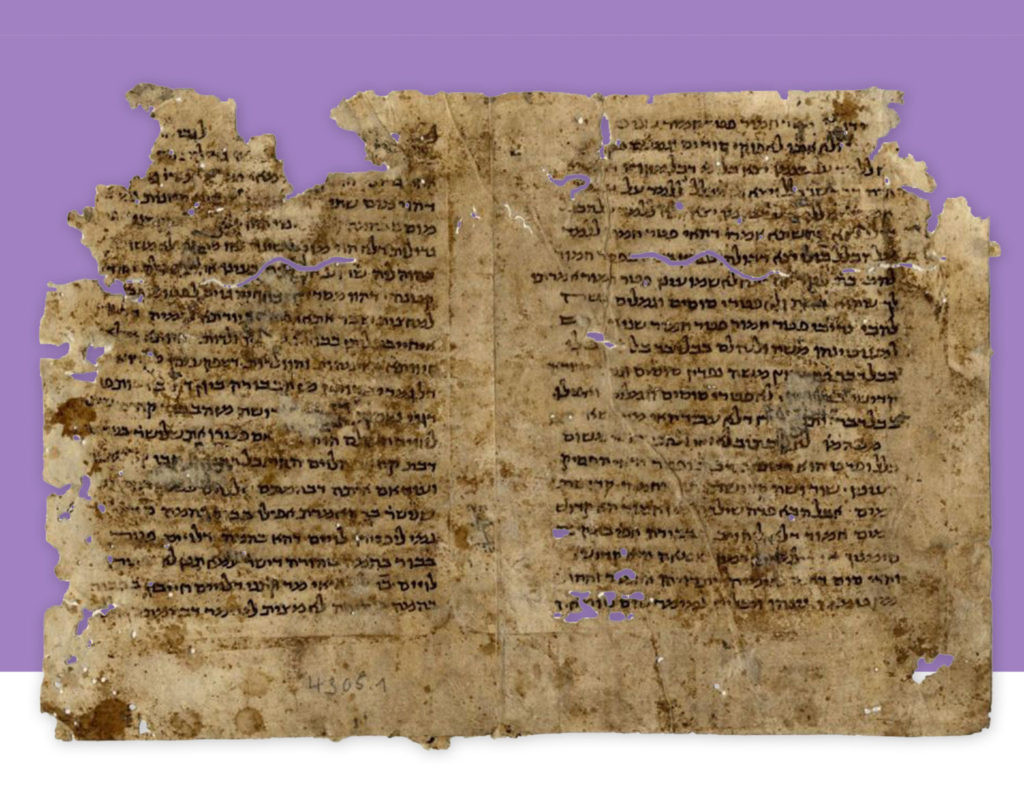
[2] leaves. Ink on paper, written on both sides.
Size: 14×19 cm.
Blemished.
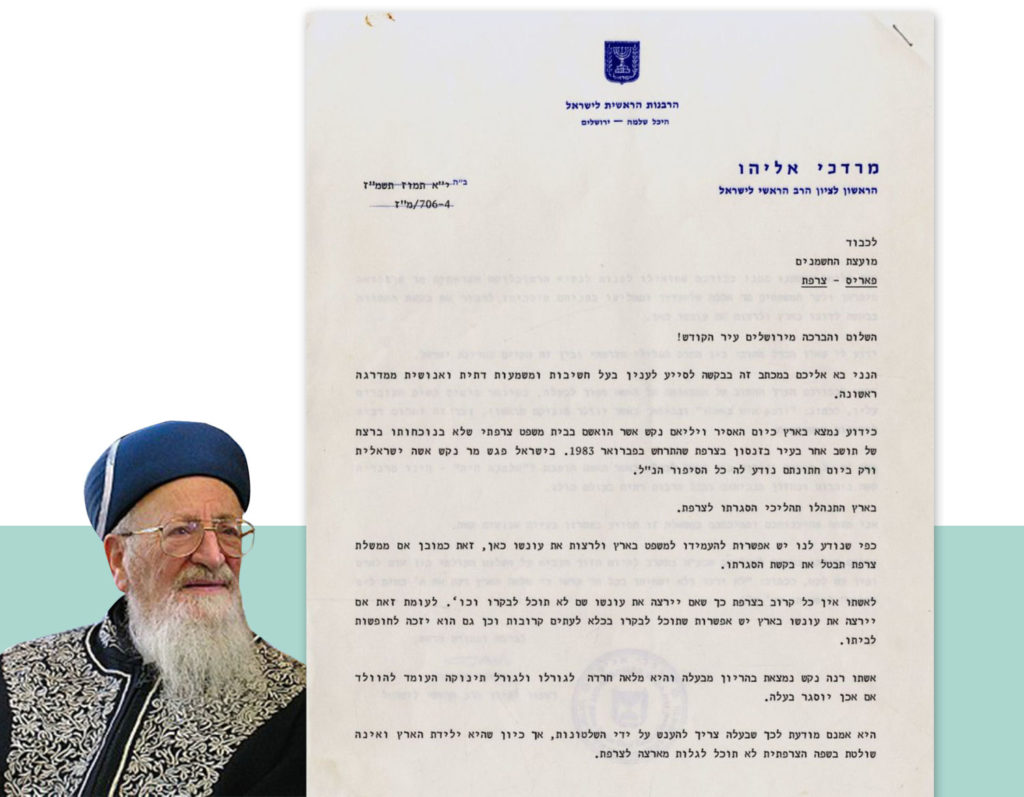
Lengthy letter, very important in its historic aspect. From the Rishon LeTziyon and chief rabbi of Israel, Rabbi Mordechai Eliyahu, to the Council of Cardinals in France, with respect to the extradition of a member of the Algerian mafia in France (considered one of the most brutal mafias in Europe), hitman William Nakash.
William Nakash was a Jewish-French-Algerian mafioso, a known figure in the Parisian underworld. He was hired in 1983 to assassinate a person named Abdullah Khaker following a conflict about control of the nightclubs in the city of lights. Nakash, leading a squad of three assassins, shot Abdullah Khaker with 14 bullets and Khaker died on the spot. Nakash’s two partners in the murder were caught a few days later. Nakash, however, fled to Israel, immediately becoming a citizen under the Law of Return, using the fake name Rudy Atlan. The French government submitted a request to the State of Israel that he be extradited to France, but Nakash disappeared as if the earth had swallowed him up.
In March of 1987, the Israeli Supreme Court, under the leadership of Meir Shamgar, decided against Minister of Justice Avraham Sarir’s decision opposing extraditing Nakash. This for fear of his personal safety in prison in France. The Court clarified that the minister’s authority is not unlimited, and he does not have the freedom to decide this case. Nakash was extradited to France in 1987 and was sentenced to 20 years’ imprisonment.
The letter before us, revealed here for the first time, is an official letter bearing the State emblem at its top. According to the date, it was written several months after the the Supreme Court’s immediate extradition decision. Yet the letter writer, the person holding the highest rabbinical position in the State of Israel, considered one of its pre-eminent symbols, Rabbi Mordechai Eliyahu, continued working behind the scenes, in a completely official capacity, to reverse the decision of the Supreme Court.
Rabbi Mordechai Eliyahu, considered the spiritual leader of the Mizrachi movement, known as a G-dly Kabbalist and lofty tzaddik, did not shy away from the inherent contradiction in the letter. Even more so, he sent the letter, with great irony, specifically to the Catholic cardinals in Paris, despite the fact that Nakash had just attempted to strike at one of the symbols of Christianity in Israel and rob the church treasury. Rabbi Eliyahu conducted himself as have leaders of the Jewish people throughout the generations – his personal honor is not his uppermost concern when there is a possibility of saving a Jew whose life hangs in the balance, with death awaiting him behind the prison bars in France – at the hands of the rival Corsican mafia. Rabbi Eliyahu believed this with his whole heart (although it was proven to be untrue in the end). The rabbi did all he could to prevent the extradition even at the cost of damaging the rabbinate’s honor, and even to some degree bringing insult to the Supreme Court and the State.
Rabbi Mordechai Eliyahu appeals in this lengthy letter to the Council of Cardinals in France requesting assistance on a religious and humane matter of utmost importance, to exert its influence on President François Mitterand to cancel the extradition. The rabbi details William Nakash’s “suffering, ” and more so, that of his expectant young wife, and requests that in order to prevent inordinate suffering, William Nakash be tried in Israel and serve his sentence there. The rabbi stresses that Nakash’s new wife refuses to emigrate to France to be near her husband, and Nakash himself refuses to legally divorce his wife, resulting in her being doomed to becoming an agunah. However, if Nakash were to serve his sentence in Israel, they could still have a semblance of a family life. The rabbi notes that a woman who becomes a “living widow” is a serious tragedy in Judaism, in the visions of prophets and in all religious cultures of the world.
[2] leaves. 27 cm. Official chief rabbi of Israel stationery, signed and stamped with the rabbi’s official stamp. Very fine condition.
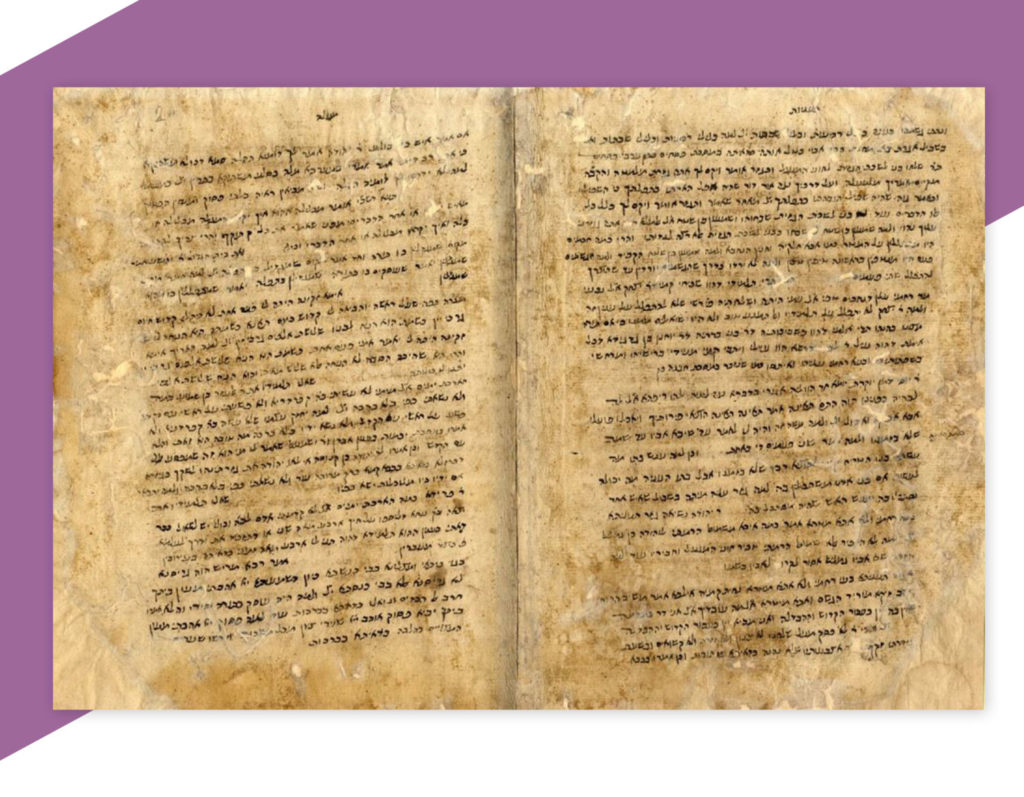
Commentary on aggadot on the Talmud on several tractates from Seder Moed.
[2] leaves. Ink on paper, written on both sides.
Size: 20×28 cm.
Restored.
In a new binding.
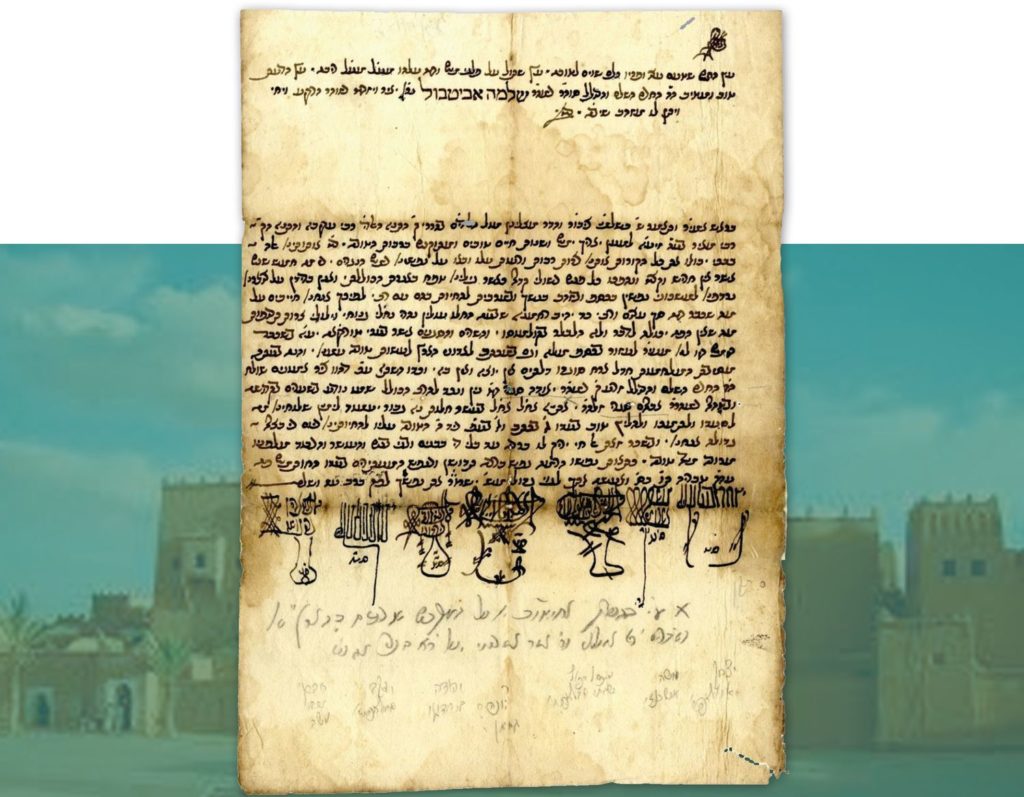
Letter from the Tiberias sages led by rabbis of the Abulafiah family regarding Rabbi Yehudah Segri’s mission to Morocco. Tiberias, 1790.
Letter to Rabbi Shlomo Abotbul [Av Beit Din Safed] regarding Rabbi Yehudah Segri’s mission, signed by leading sages of Tiberias led by the sages of the Abulafiah family, grandsons of Rabbi Chaim Abulafiah, who re-established the Jewish settlement there in 1740.
Rabbi Yitzchak Abulafiah – son of Rabbi Yissachar Abulafiah son of Rabbi Chaim Abulafiah, who re-established the Jewish settlement in Tiberias. He was one of the leading sages of Tiberias and appointed to the Safed and Tiberias communities by the minister Rabbi Chaim Farchi. Rabbi Yisrael of Shklov describes him as: ‘Ruler and administrator of these two towns.’ He passed away in 1825, and his tombstone is inscribed [Hebrew]: “Here lies the glory of his time, faithful shepherd of Israel, his name is great.”
Rabbi Ya’akov Abulafiah – son of Rabbi Yissachar Abulafiah son of Rabbi Chaim Abulafiah, who re-established the Jewish settlement in Tiberias. He was one of the leading sages of Tiberias. He lived most of his life in Constantinople, and passed away in Tiberias in 1792.
Rabbi Michael Shabtai Rephael Abulafiah – son of Rabbi Yechezkel Abulafiah son of Rabbi Chaim Abulafiah, who re-established the Jewish settlement in Tiberias went on a mission as emissary of Tiberias to Turkey several times. He published Chiddushei HaMeiri – Yevamot (Salonika 1801) and his father-in-law’s Simchat Olam . He passed away in Constantinople in 1807.
Rabbi Yehudah Birdugo – ascended with his father from North Africa to Tiberias. His signatures are found on emissarys’ letters until 1805.
Rabbi Moshe Ashkenazi.
Rabbi Yonah Jian – a Tiberias sage signed on documents and emissarys’ letters from 1790-1803.
Rabbi Aharon b”r Moshe.
Regarding the mission of Rabbi Yehudah Segri, grandson of Rabbi Avraham Segri of Kassel, refer to A. Ya’ari, Shluchei Eretz Yisrael pp. 634-635. Further details about these signatories can be found in Sefer Teveriah pp. 278 onward.
[1] size: 27×19 cm. Tiny individual holes, aging stains.
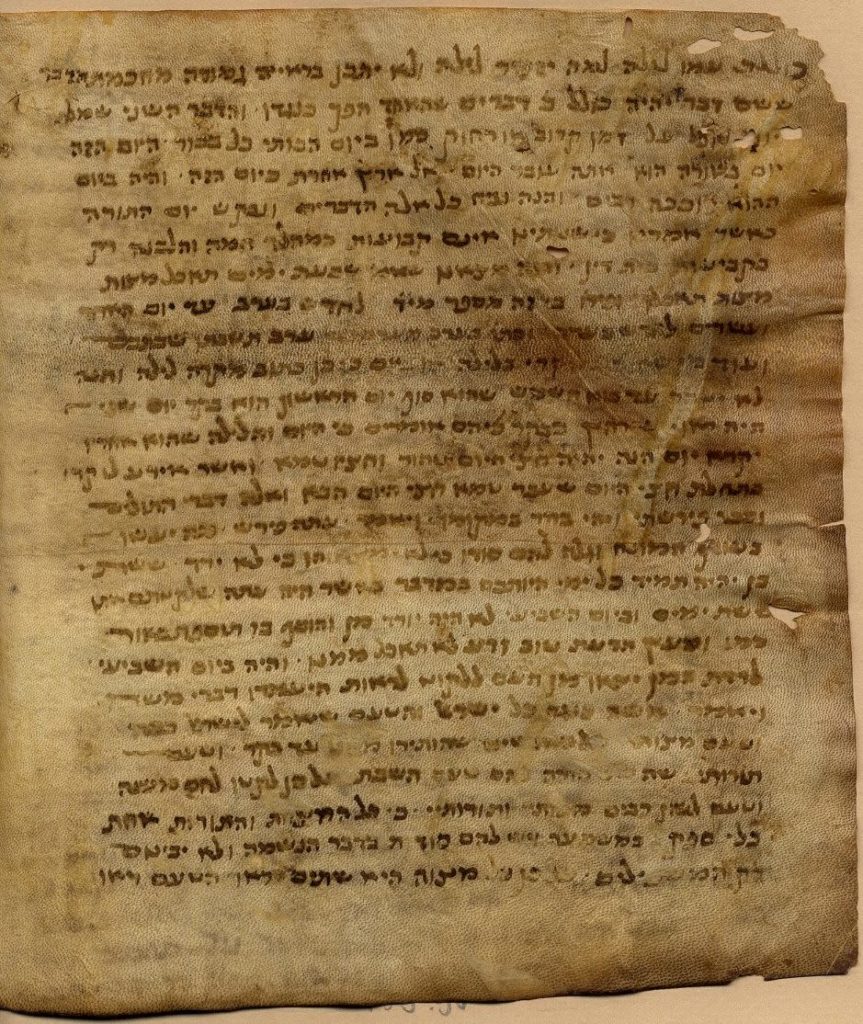
Passages from the Ibn Ezra’s commentary on Sefer Shemot (Chap. 20). Yemen, 16th century.
Leaves removed from genizah.
[9] leaves in various sizes that were bound together. Some of the leaves are incomplete.
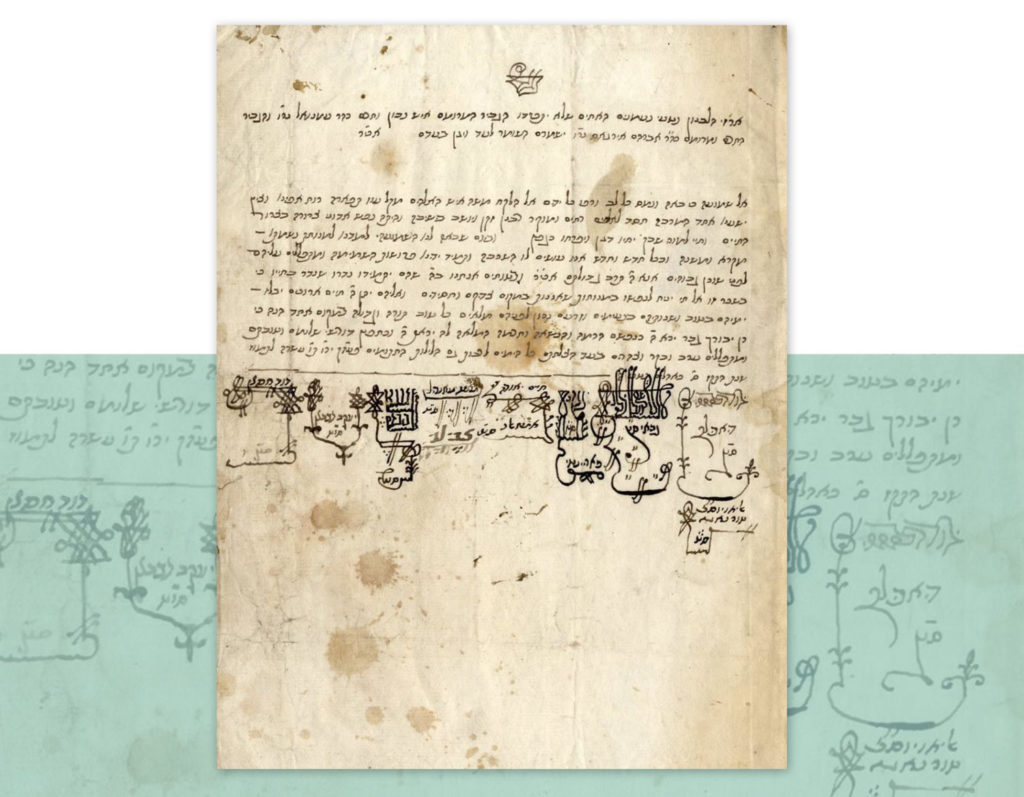
Disciples of the Ohr HaChaim HaKadosh
Rabbeinu Chaim ben Attar [1696-1743] was known by the name of his work, as “The Ohr HaChaim HaKadosh.” He wanted to hasten the redemption of the Jewish people by establishing a yeshivah in Jerusalem whose members would conduct themselves with sanctity and piety. During the day they would occupy themselves with Torah, and at night they would occupy themselves with prayers and supplications for the redemption, for the Jewish people, and for the distress of the Divine Presence.
He left Morocco accompanied by several disciples, arrived in Livorno and worked there to found the yeshivah. More disciples joined him in Livorno, and in 1742, they arrived in the Land of Israel, and he established his yeshivah -“Knesset Yisrael” – in the Holy City.
His great disciples wrote about him in the introduction to the Ohr HaChaim’s book,
Rishon LeTziyon , as follows: “We left our homeland, and we gathered in His arms from the end of the world and the edges of the country, and we came to the Land to gather under the shadow of his wisdom as we said, ‘We will live in His shadow; we will dwell under His wing.'”
Spectacular descriptions of the study schedule and of the holy and lofty atmosphere in the yeshivah and in the shadow of the Ohr HaChaim HaKadosh appear in: Letters sent to Italy, in the above introduction, and in the introduction to
Kadshei David .
However, his days in Jerusalem were not long; less than a year after his arrival his spirit returned to G-d. Even after this tzaddik’s passing, the yeshivah continued to exist under his disciples.
(Sources: M. Benayahu
LeToldot Beit HaMidrash Knesset Yisrael BiYerushalayim , Jerusalem (quarterly) Volume II, pp. 2-117).
Following are three extremely rare letters written and signed by disciples of the Ohr HaChaim HaKadosh:
Especially rare letter of historic importance. Signed by the greatest and closest disciples of the wondrous rabbi Chaim ben Attar, who dwelled in his shadow at his yeshivah, ‘Knesset Yisrael’ in Jerusalem.
The letter contains condolences to Rabbi Avraham and Rabbi Emmanuel Igress of Livorno, author of
Shomer Emunim and
Mevo Petachim , upon the passing of their paternal uncle, philanthropist Rabbi Moshe Igress. In their letter, the Ohr HaChaim’s disciples note that they are conducting a “hashkavah” for the departed as well as studying for the ascension of his soul.
Although the yeshivah’s name does not explicitly appear in the letter, it is clear that the letter’s writers are students of the ‘Knesset Yisrael’ yeshivah which continued to exist after the Ohr HaChaim’s passing. Most of the signatories on the letter are known to have been members of the yeshivah, and these also attest for the rest. (Refer to: M. Benayahu
LeToldot Beit HaMidrash Knesset Yisrael BiYerushalayim , Jerusalem, Volume II, list of students over the generations.) This historic letter reveals three additional disciples who are not mentioned in Benayahu’s list.
Disciples of the Ohr HaChaim HaKadosh who signed the letter:
Rabbi Chaim Yehudah Amzaleg – One of the leading disciples of the Ohr HaChaim.
Rabbi David Shmuel Chaim Chassan. (See more about him in this catalog.)
Rabbi Shem Tov Gabbay. (See more about him in this catalog.)
Rabbi Yehudah de Abella.
Rabbi Tzvi Levi – one of the Ohr HaChaim’s disciples.
Rabbi Ya’akov Parientti – one of the Ohr HaChaim’s disciples who apparently ascended with him from Morocco.
Rabbi Ya’akov Atzban – one of the Ohr HaChaim’s disciples.
Rabbi Moshe Mandel.
Rabbi Shmuel Bibas.
Rabbi Eliyahu Yosef Surnaga. These final three disciples are revealed for the first time in this letter before us.
More details about some of the above disciples can be found in the Hebrew catalog text.
[1] sheet of paper, folded into two leaves, 24×18 cm each (the first leaf contains the body of the letter and the second contains details of the sender and of the addressee). Thick, quality paper. Oriental script. Fine condition. Aging stains.
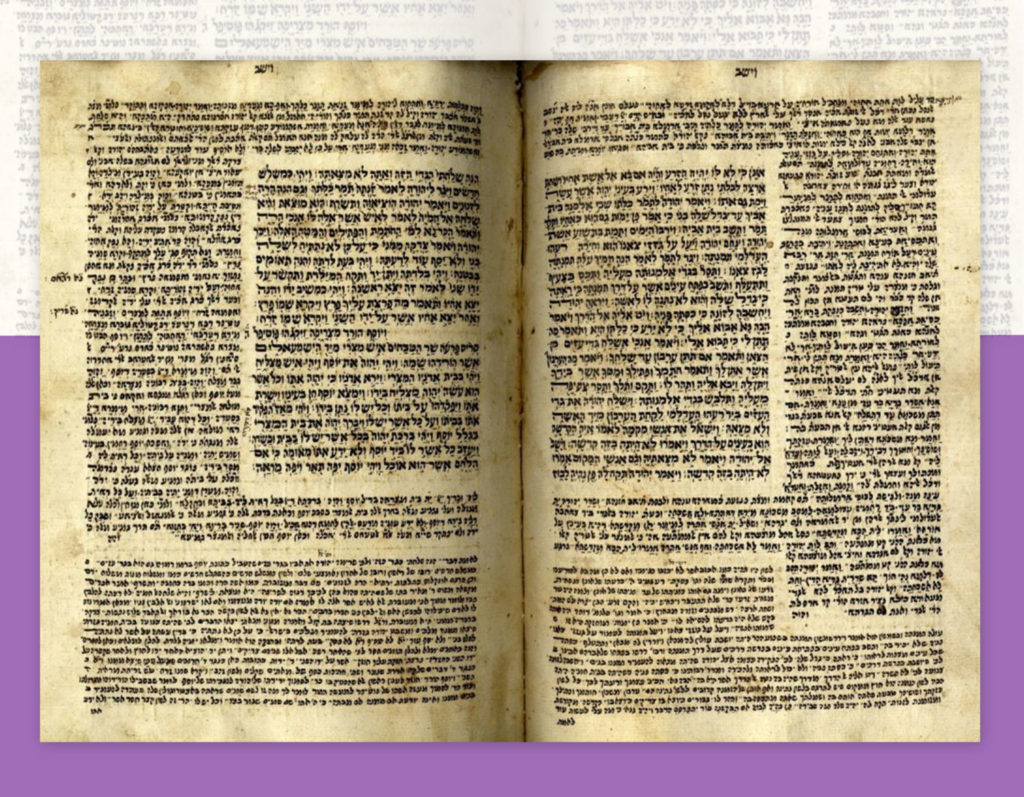
Taj – Keter Torah. Bereishit and Shemot with Targum and Rash”i’s commentary. Beautiful ancient Yemenite script in the hand of sofer and transcriber Mori Yosef ben Shocher.
The biblical text is in large block letters with vowelization and cantillation. The Targum is in Rash”i script, also vowelized. Rash”i’s commentary is not vowelized. The mesorah appears in the leaf margins; the glosses and novellae in smaller lettering.
The colophon at the end of the volume describes Mori Yosef ben Socher and the hardships he underwent along with our brethren, the Jews of Yemen, writing as follows: “And I, in great sorrow, am in the city of Sana’a – we sit to this day under the burden of heavy tax burdens – there is no one who has mercy aside from our Father in Heaven.
Mori Yosef ben Socher was active in the second half of the 19th century. Several of his transcriptions are the possession of the sages of the Gavra family of Sod, as well as his transcription of the Etz Chaim siddur by the Mahari”tz in honor of the Ra’avad Mori Shalom ben Yichye Gavra, and his transcription of the Shulchan Aruch Tur Ohr HaChaim, with the “Shetilei Zeitim” commentary by R”d of Sharki.
[188] pp, 23×34 cm. Thick, high-quality paper.
Fine condition, aging stains. Ink smudges. Restored tear in the first leaf with damage to text. Leather binding.
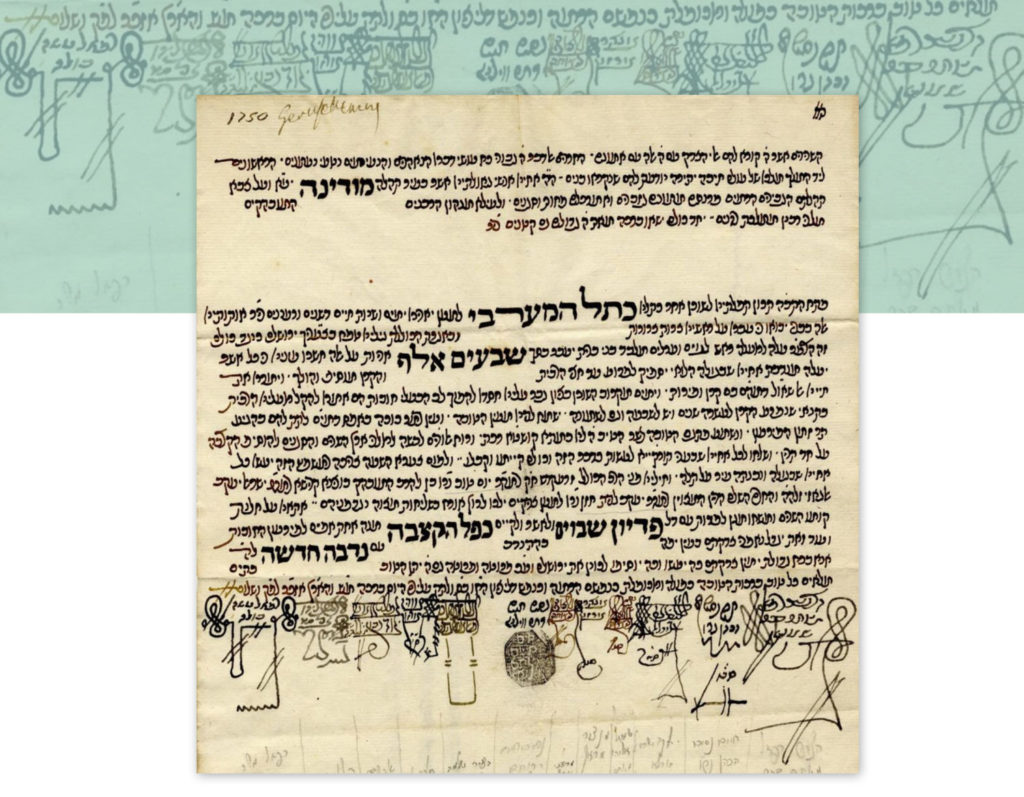
Early and important missive appointing Rabbi Yom Tov Algazi and Rabbi Ya’akov Chazan to collect funds and solicit contributions from the Modena community (in Italy).
The difficult situation in Jerusalem in the early 1760s, conflicts within and without, and its extremely desperate economic state brought the sages of Jerusalem to write this missive. Jerusalem’s debts rose to a level of 70,000 aslandis (lions), a huge sum in those days. The debts were owed to gentiles and to Jews, and they request redemption. The special emissaries sent until that point by the Ashkenazim to the Ashkenaz communities made efforts to appeal to the heads of the communities to dedicate their funds to the Ashkenazim in Jerusalem only. A need was therefore felt in the Jerusalem community for a special mission imposed on two of the geonim of Jerusalem, none other than Rabbi Yom Tov Algazi and Rabbi Ya’akov Chazan.
This mission took six years, and in 1677 the Mahari”t Algazi returned to Jerusalem and within a short time he was appointed chief rabbi of Jerusalem. Refer to A. Ya’ari, Shluchei Eretz Yisrael p. 535 about this mission. The document concludes with the prayer “to give them a blessing today” and a chronogram for the year 1770: והא”רץ אזכ”ר לפ”ק.
Rabbinic signatories on this missive:
Rabbi Rephael Meyuchas son of Rabbi Shmuel Meyuchas [author of Pri HaAdamah ], Rabbi Chaim Nisko HaKohen, S”T, Rabbi Ya’akov Yisrael Burlah S”T [author of Shu”t Mekor Yisrael and Nachalat Yehuda ], Rabbi Shmuel Eliyahu Meyuchas S”T, Rabbi Mordechai Yosef Meyuchas [later the Rishon LeTziyon], Rabbi Nissim Chaim Yerucham of Vilna, the youth Shlomo son of Rephael Moshe Bulah [author of Lechem Shlomo ], Rabbi Sa’adyah Marzuk, S”T, Ephraim ben Rabbi Yeudah Navon zlh”h [author of Bayit Moshav ], the youth Eliyahu Tzvi S”T, Rabbi Rephael Moshe Bulah [author of Get Mekushar ].
[1] leaf paper. 32×22 cm. High-quality paper.
Very fine condition. Fold marks. Aging stains.

Sefer Taj – Keter Torah . Sefarim: Vayikra, Bamidbar, Devarim, with vowelization and cantillation. Antique Yemenite upright script written by scribe and transcriber R’ Yosef Sharabi.
In the colophon at the end, the scribe describes the hardships he underwent among our brethren, the Jews of Yemen.
Approximately [268] pp, 23×34 cm. Thick, high-quality paper.
Fine condition. Ink smudges. Tears in the corners of two leaves. New binding.
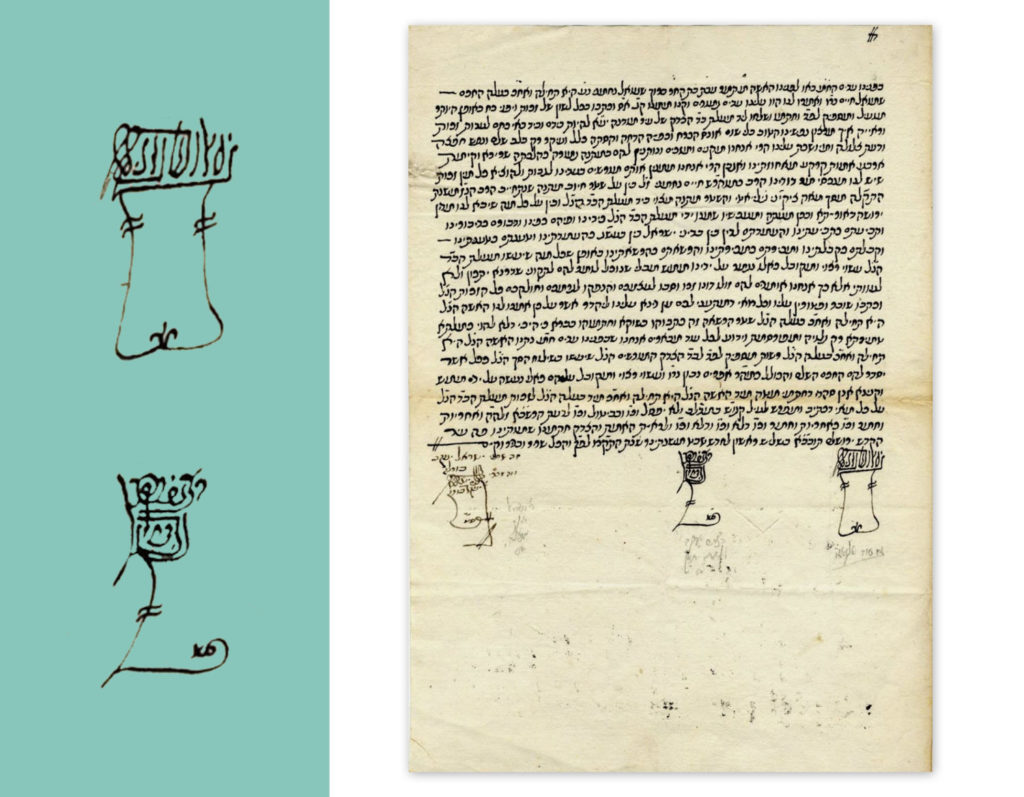
Writ from a beit din signed by Rabbi Yom Tov Algazi – the Mahari”t Algazi, Rabbi Yisrael Ya’akov Burla, and Rabbi Ya’akov Chazzan.
Writ from the beit din about power of attorney to collect an inheritance in Modena, Italy, through the emissary Rabbi Ephraim Navon. Signed by the Rishon LeTziyon and leading dayanim of Jerusalem.
Rabbeinu Yom Tov – the Mahari”t Algazi [1727-1802], was a son of the gaon Rabbi Yisrael Ya’akov Algazi. The Mahari”t was a gaon and a Kabbalist. His visage was that of a G-dly angel. He succeeded his rabbi, the Rasha”sh, as the head of the ‘Beit El’ Kabbalists’ study hall in Jerusalem. Beginning in 1773 he served as Rishon LeTziyon in Jerusalem. The renowned work for which he is eternally remembered is his Hilchot Yom Tov on the Ramba”n’s halachahs of bechorot and challah. The Chata”m Sofer wrote in his approbation for said book: “I was acquainted with him from the time he was an emissary from Tziyon in Frankfurt am Main, and the land lit up from his presence, yet did not reach even half the honor due him as can be seen from his composition Hilchot Yom Tov ; he has achieved wonders and increased scholarship. From the day Mishneh LaMelech was composed, nothing like it has been seen.”
Rabbi Yisrael Ya’akov Burlah (Burla) served as Ra’ava”d in the Mahari”t Algazi’s time. He passed away in 1797. His responsa were printed in Mekor Yisrael and Nachalat Yeuda in 1882.
Rabbi Ya’akov Chazzan was one of the sages of the Beit Avraham yeshivah in Jerusalem. He was sent on a mission with the Mahari”t Algazi in 1770 – refer to the following item for the mission letter. He passed away in 1802.
[1] leaf, 31×22 cm.
Very fine condition. Fold marks. Aging stains. Slight blemish in the left margin.
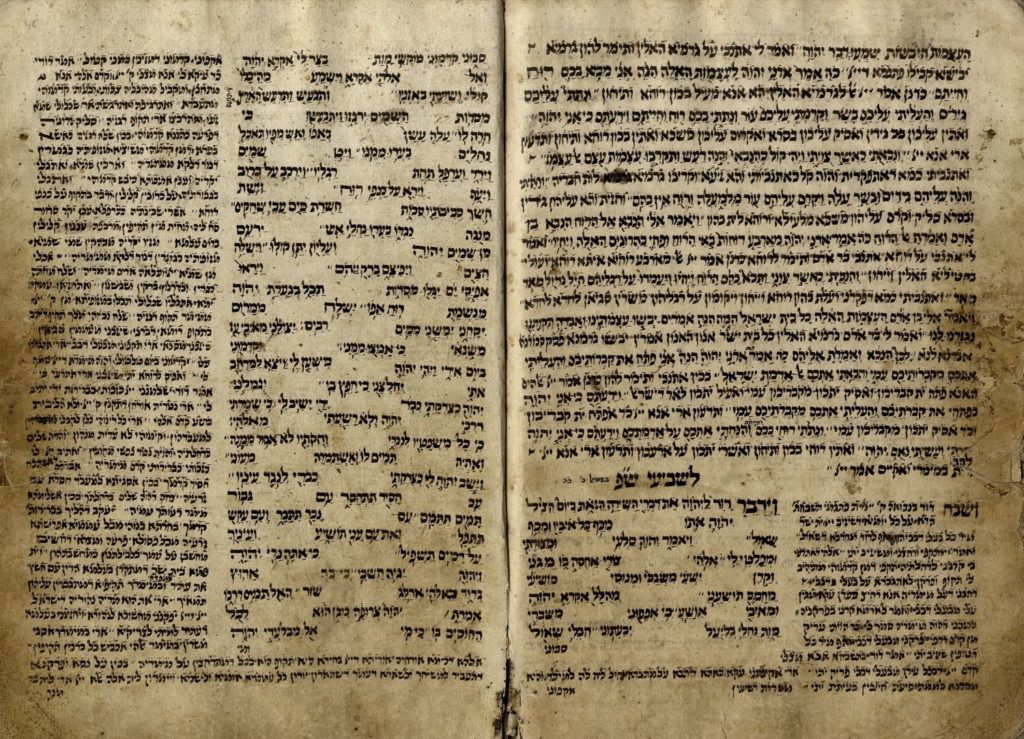
Haftarot for the whole year per the Yemenite custom. Vowelized Yemenite script. Transcribed by David Elkahari. Tanem, 1822.
Haftarahs for the entire year, including: haftarahs for all the weekly Torah portions, Shabbat Rosh Chodesh, the four parshiyot, and festivals. Verse-by-verse biblical text and Aramaic translation. The Torah text includes cantillation and lower vowelization and the translation is with upper vowelization (Babylonian vowelization). Each haftarah has its own title in large block letters, as well as reference to its location in Tana”ch. The first word of each of the haftarahs is also in large block letters. At the beginning of the manuscript there is a large decorative title page with the blessing recited over the haftarah: ” … asher bachar b’nevi’im tovim.” The manuscript concludes with a lengthy colophon including the writer’s name and the year it was written, and many other details about the writer and the period.
[112] pp, 20×30 cm.
Moderate-fine condition. Aging stains. Professional restoration to the margins of the first and last leaves with damage to text. Tears in the margins of some of the leaves. New marbleized paper binding.

Document of agreement and regulations about the manner of financial administration of income and expenses of the Sephardic kollel in Tiberias, selection of gabbais, the manner in which money is distributed to the poor, and more. Extremely rare.
The regulations are comprised of ten sections. Approximately 50 rabbis, sages, dayanim, emissaries and other city leaders signed on the agreement.
Refer to the Hebrew text for a partial list of the rabbinic signatories. Biographic material on the rabbinic signatories can be found in Toldot Eliyahu , Otzrot Yosef , and Sefer Teveria .
[1] leaf paper, 23×33 cm.
Fine condition. Fold marks. Tears in the folds with damage to individual letters.
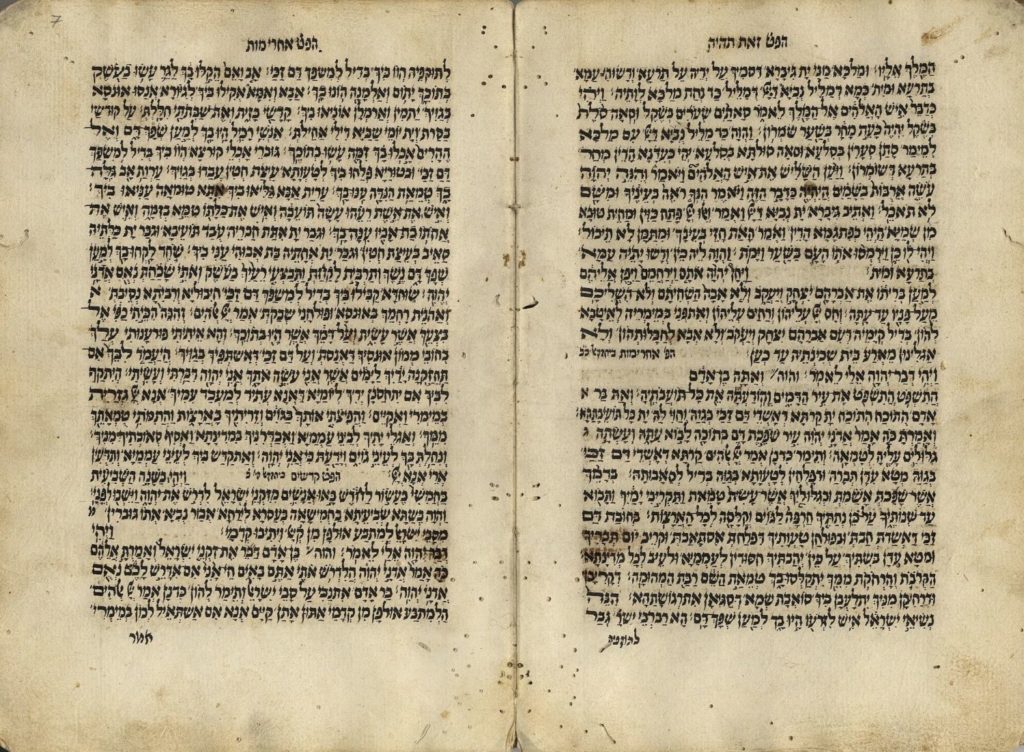
Haftarot for chumashim Vayikra, Bamidbar and Devarim. Expert scribal script in vowelized Yemenite writing. Without the name of the writer or the year it was written.
Verse-by-verse biblical text and Aramaic translation. The Torah text includes cantillation and vowelization, and the translation is vowelized. Each haftarah has its own title and reference to its position in Tana”ch. Titles at the tops of all the pages. The flyleaf bears a lengthy owner’s notation.
[70] pp, 17×25 cm. Lacking the final haftarah (for V’Zot HaBerachah).
Moderate-fine condition. Aging stains. Worming perforations. Professional restoration to the margins of the first and last leaves with damage to text. Tears in the margins of some of the leaves. New marbleized paper binding.